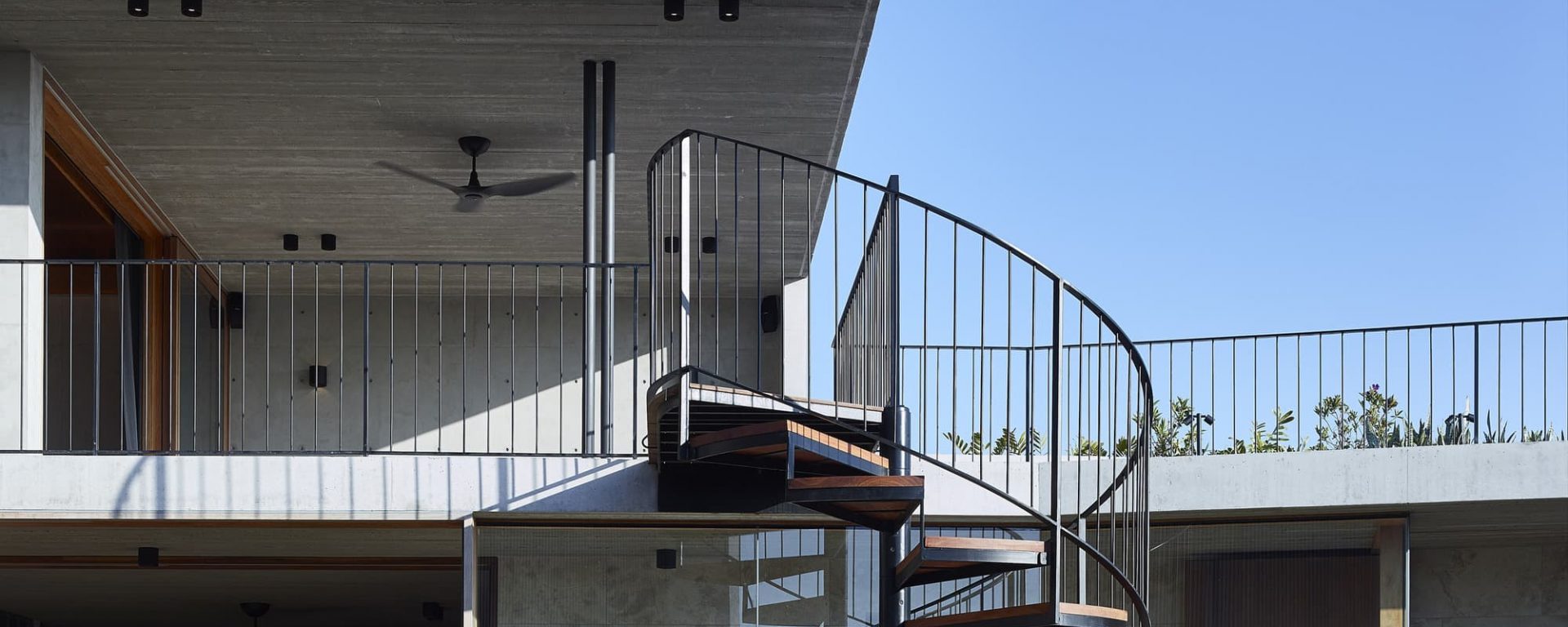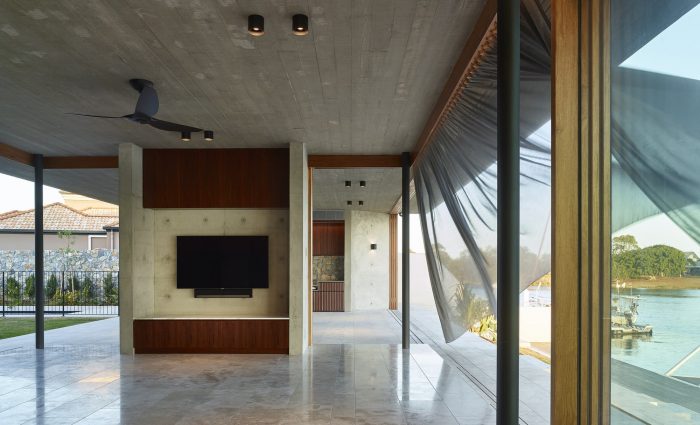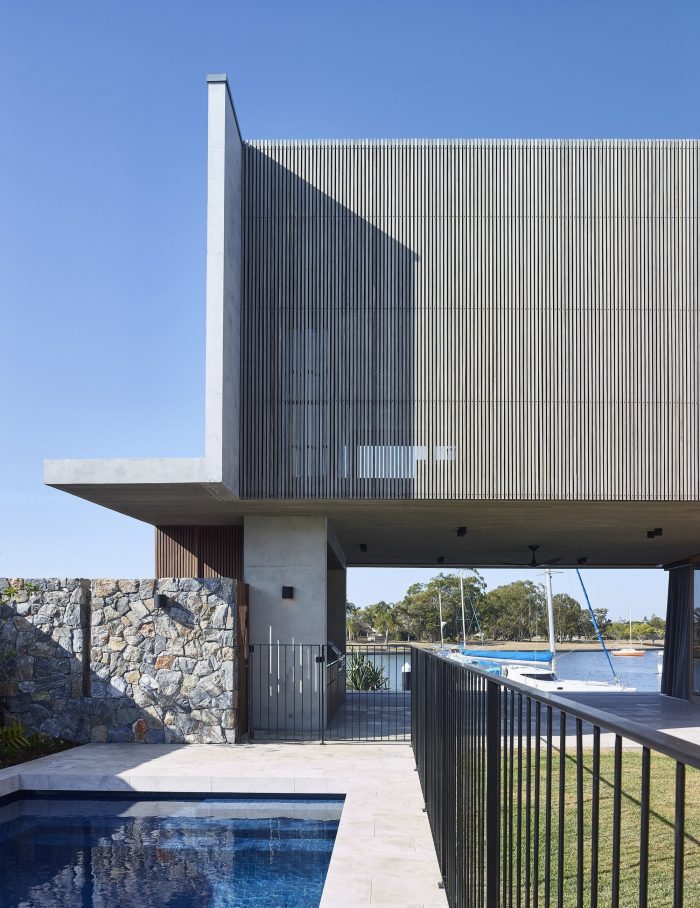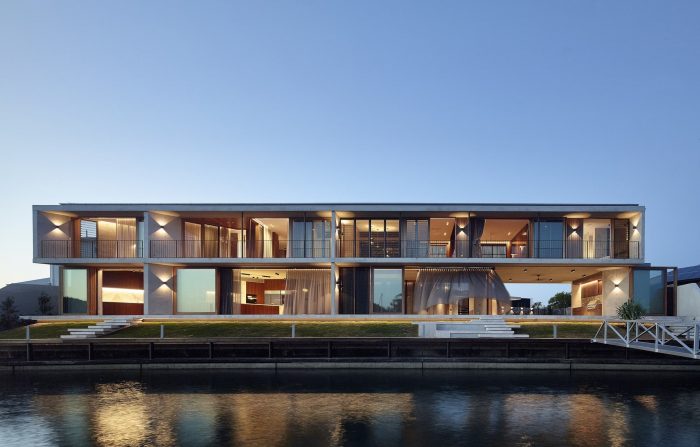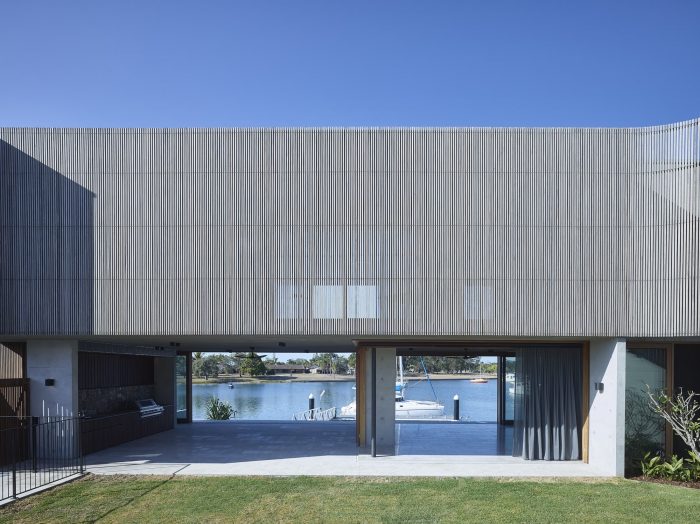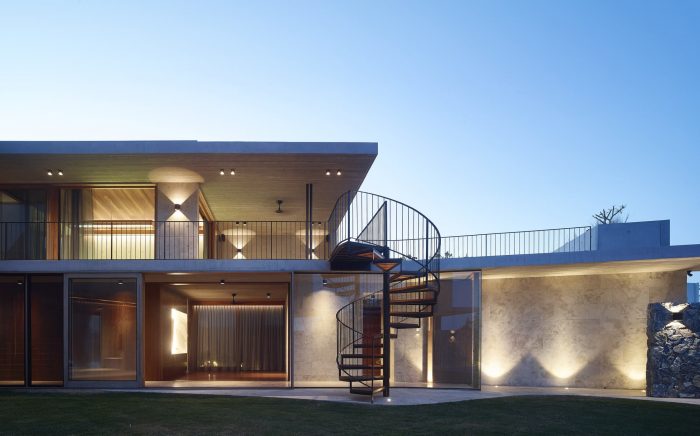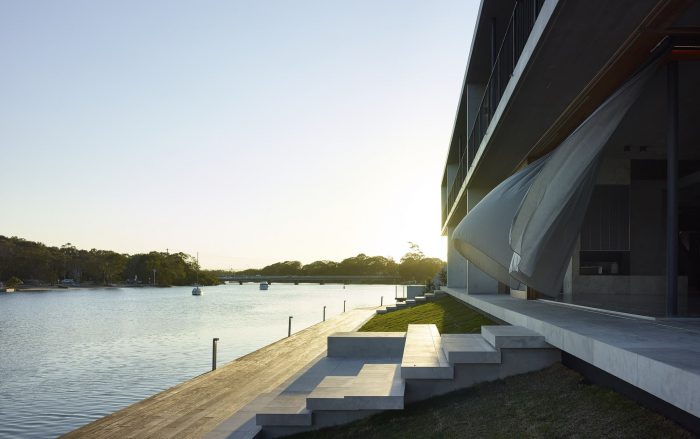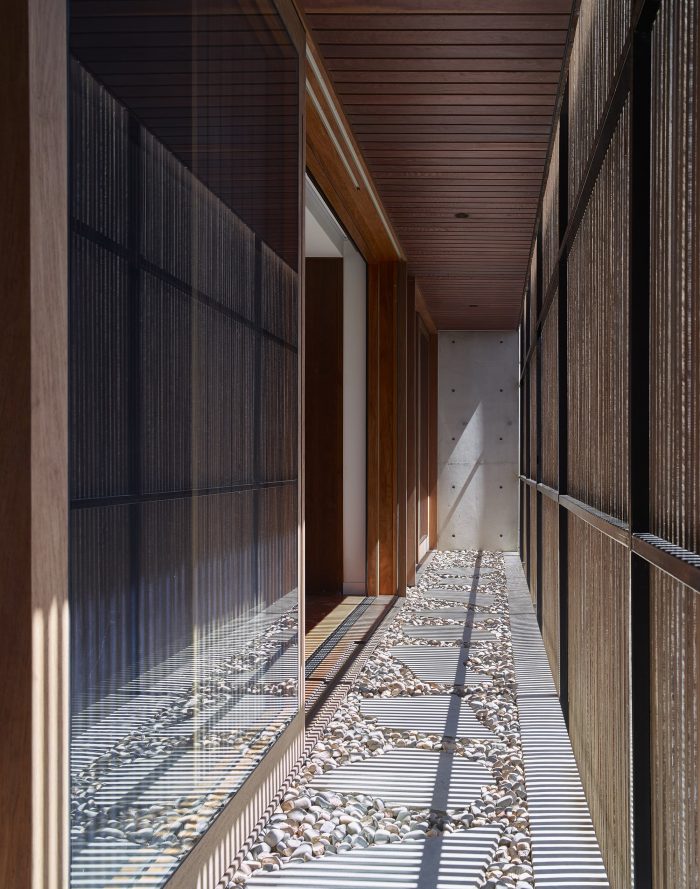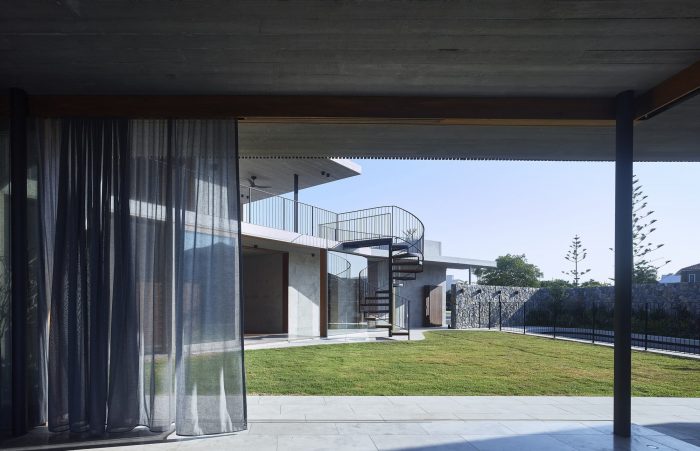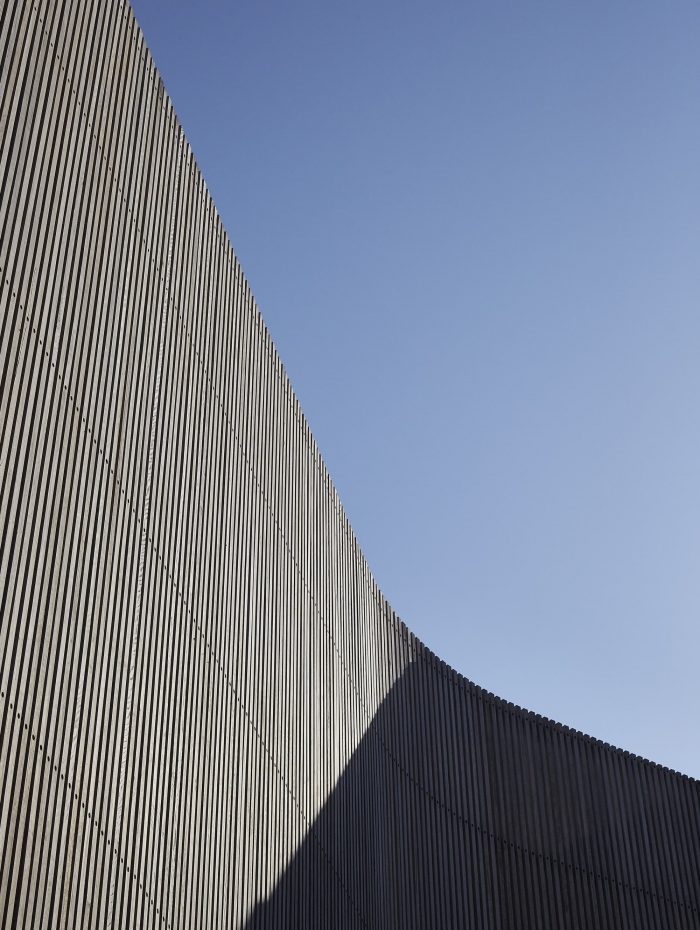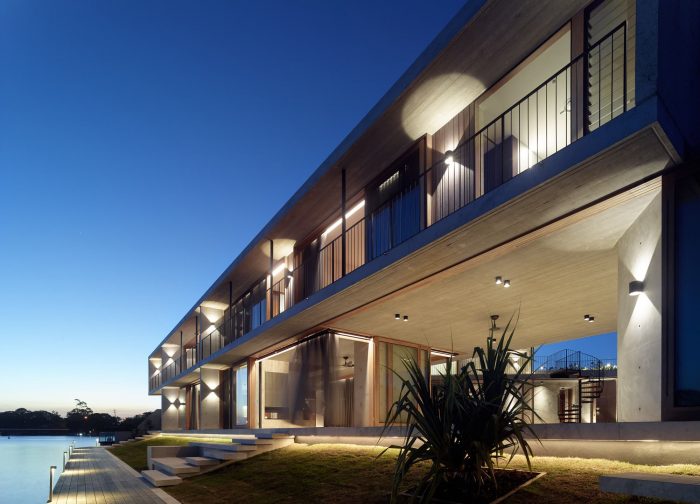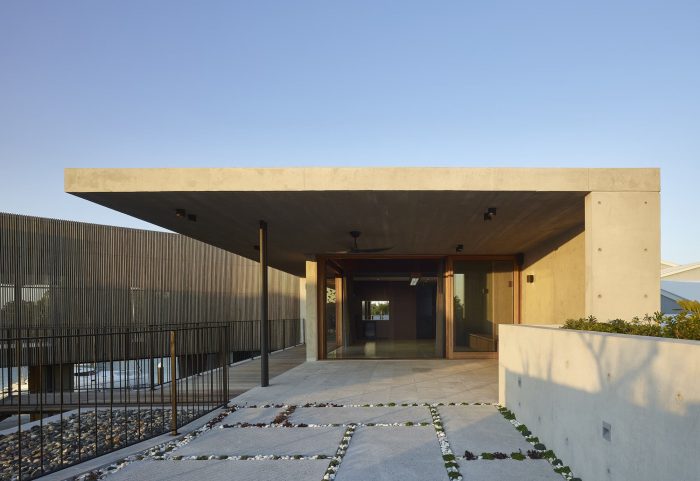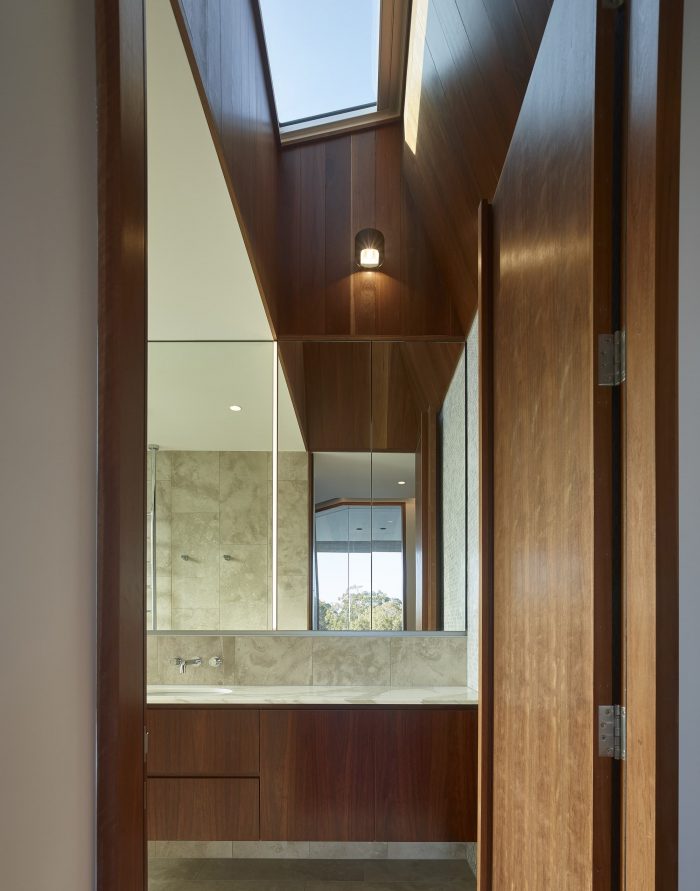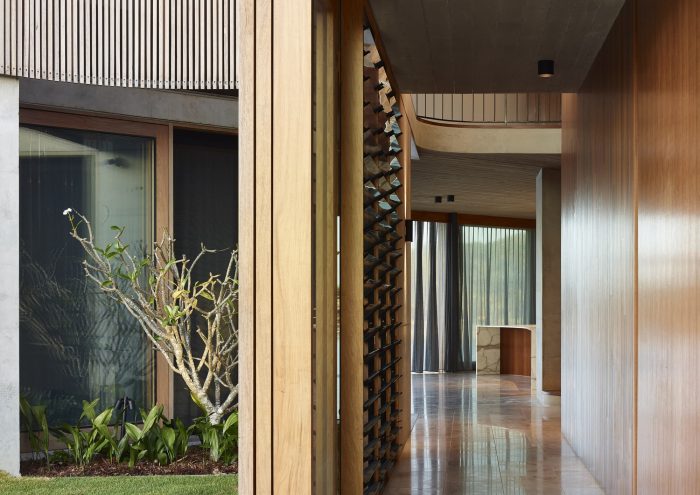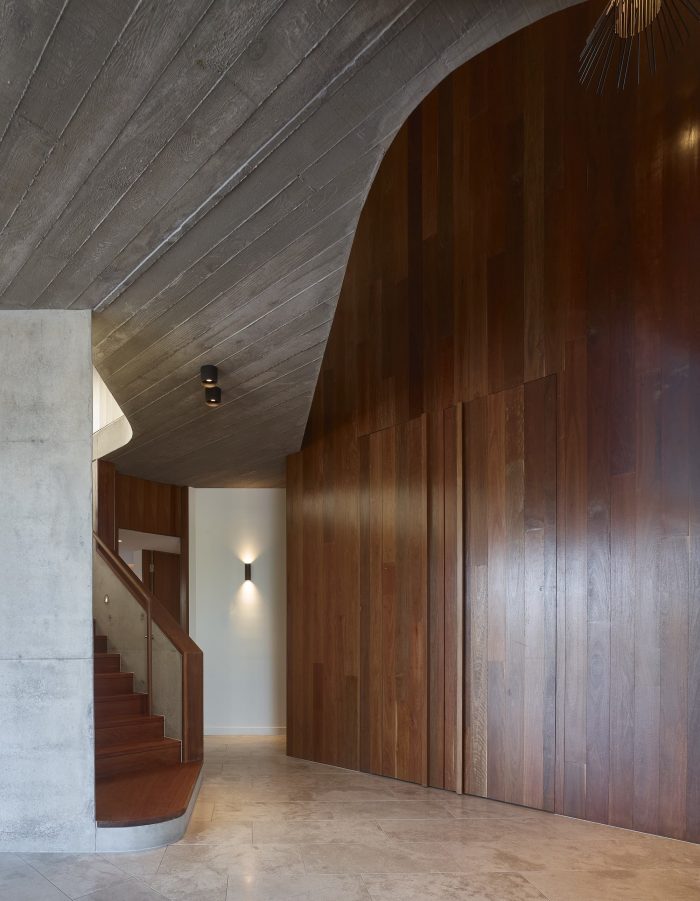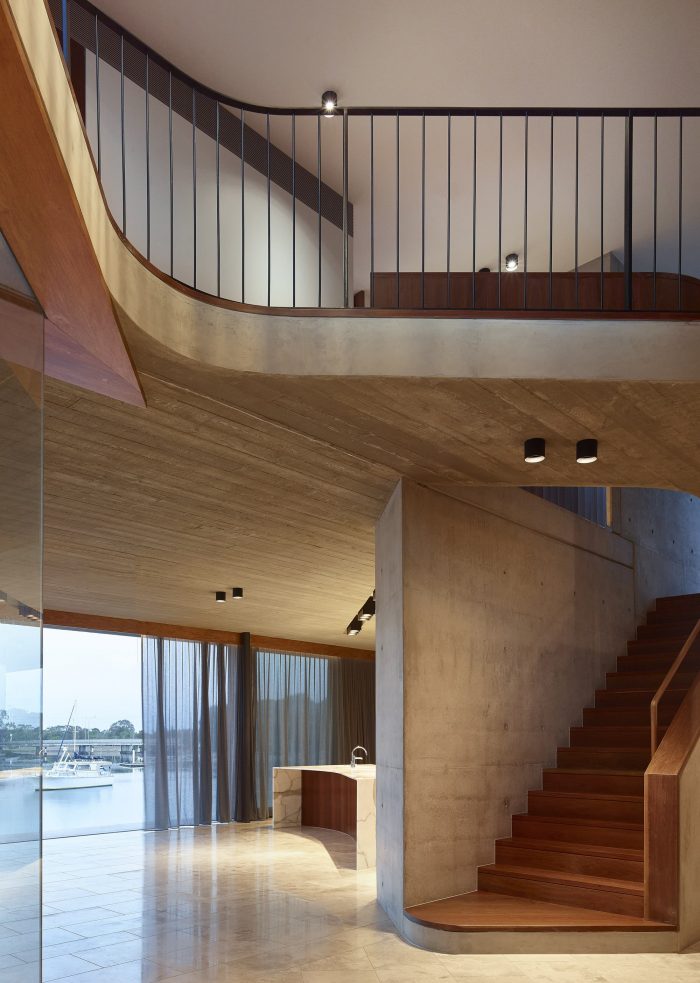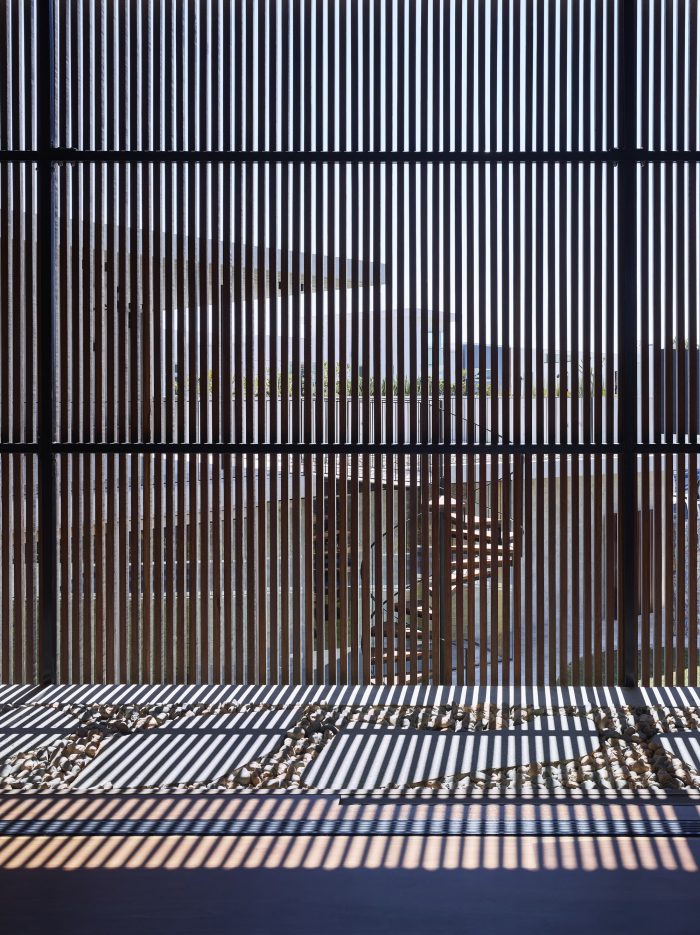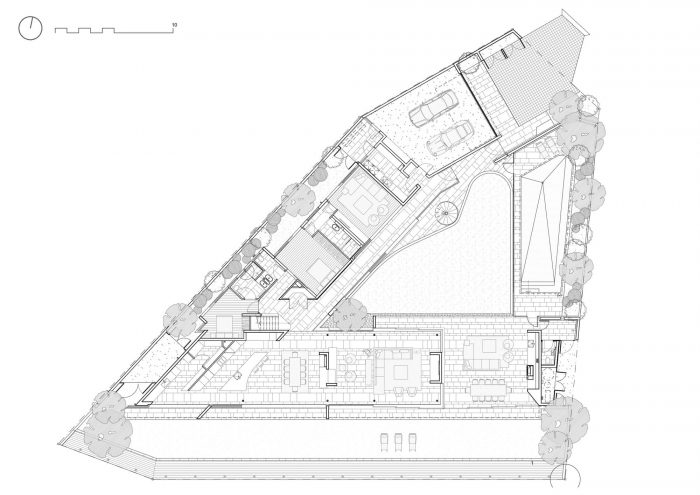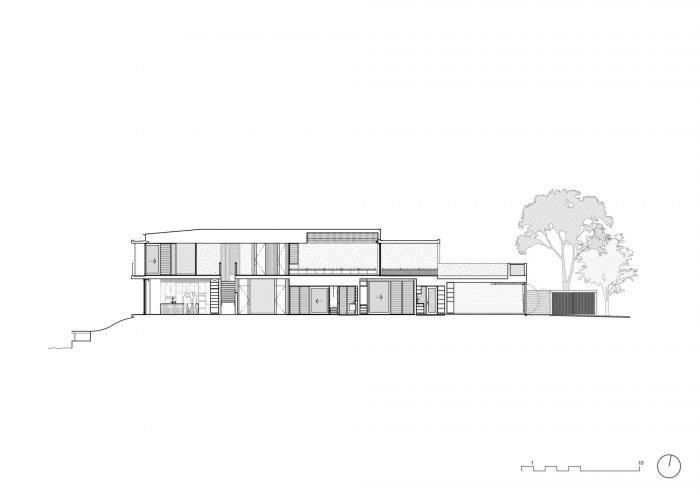V型屋的设计采用了一个简单的 “庭院住宅 “概念,房屋拥抱不规则形状的场地边界,以利用东北方向的庭院,并连接到南部的水边(”V “源于由此产生的规划形式)。
The V House design employs a simple ‘courtyard home’ concept, with the house embracing the irregular-shaped site boundaries to leverage the north-east orientation to the courtyard and connect to the water’s edge on the south (the ‘V’ stemming from the resultant plan form).
规划创造了一个从街道开始的入口序列,并建立了一个通向主要生活空间的透明脊柱,这些生活空间紧贴着物业的南部边缘。这一决定是由创造一个透明的生活馆的愿望驱动的,该生活馆直接与水边接触,同时拥抱东北部的游泳池和院子区域。反过来,一个主要的建筑形式在一楼被创造出来,私人卧室和一个斯诺克/游戏室在北边享有一个景观屋顶露台,可以通过一个雕塑般的钢制螺旋楼梯从下面的庭院进入。
The planning creates an entry sequence starting at the street and establishing a transparent spine to the primary living spaces which hug the southern edge of the property. This decision is driven by the desire to create a transparent living pavilion that engages directly with the water’s edge while simultaneously embracing the north-eastern pool and courtyard area. A predominant building form is, in turn, created on the first floor, where the private bedrooms and a snooker / games room enjoy a landscaped roof-top terrace on the northern edge accessible from the courtyard below via a sculptural steel spiral stair.
这个主要的亭子特意从街道后退,以使东北角依次向光线和花园开放。房子的规模与相邻的住宅非常兼容,住宅的窄边呈现在街道上,而房子的大部分则沿南边建在后面。然而,它故意颠覆了小窗户和传统屋顶形式的家庭范式,而是选择了一个有屏风的外墙和隐藏的屋顶形式,表现了现代的亚热带建筑。
This main pavilion is deliberately setback from the street to open the north-east corner to the light and garden in turn. The scale of the house is very much compatible with the adjoining homes with the narrow edge of the home presenting to the street and the bulk of the house built to the rear along the south. However, it deliberately subverts the domestic paradigm of small windows and traditional roof form, opting instead for a screened facade and hidden roof forms expressive of a modern, subtropical architecture.
这座房子以一种非传统的方式呈现在街道上,是一个石块包裹的、大量的景观形式。高度活泼的木质屏风在夜晚呈现为日本灯笼,为公共领域提供了一个愉快和温暖的边缘。坚固的、高度耐用的材料,有望为该地区的典型住房类型提供一个更可持续的长期替代方案。
The house instead presents to the street as a stone-clad, heavily-landscaped form in a non-conventional way. The highly animated timber screen presents as a Japanese lantern by night offering a pleasant and warm edge to the public realm. Robust, highly durable materials intended to weather will hopefully offer a more sustainable long-term alternative to the typical housing typology in the area.
这是一个坚固、耐磨的住宅,旨在优雅地老化和限制维护。木制雨幕提供了阴凉、保护和安全,与亚热带环境相呼应。深屋檐、良好的横流通风、热质量和自然采光使其成为一个非常可持续的长期主张。太阳能、电池储能、低辐射玻璃、LED照明和FSC硬木完成了我们创造一个相关和持久的家的方法。
This is a robust, hardwearing home intended to gracefully age and limit maintenance. The timber rain screen offers shade, protection and security responding to the sub-tropical context. Deep eaves, excellent cross-flow ventilation, thermal mass and a naturally lighting make for a very sustainable long-term proposition. Solar power, battery storage, low-E glazing, LED lighting and FSC hardwoods complete our approach to creating a relevant and enduring home.
V屋是一个度假屋,将成为业主的永久住所,所以它需要穿越一个灵活和变化的需求。最终的结果直接回应了他们当前和长期的需求,虽然房子很大,但它有一个人性化的规模和亲密感,使较小的群体在这个空间里感到舒适。
The V House is a holiday house that will become the permanent home for the owners, so it needed to traverse the needs of a flexible and changing brief. The resultant outcome directly responds to their immediate and long-term needs, and while the house is large, it has a human scale and intimacy which allows smaller groups to feel comfortable in the space.
Architects: Shaun Lockyer Architects
Area : 835 m²
Year : 2017
Photographs :Scott Burrows
Manufacturers : VELUX Group, Bluescope, Dulux, Eco Outdoor, SNB Stone
Lead Architects : Shaun Lockyer, Jen Negline
Builder : CGH Constructions
Engineering : Westera Partners
Awards : 2018 AIA Queensland State Architecture Award – House of the Year, 2018 AIA Sunshine Coast House of the Year, 2018 AIA Sunshine Coast Regional Commendation, 2018 CEDIA Life Lived Best at Home Asia Pacific Award, 2018 CEDIA Best Integrated Home Level I Asia Pacific Award
City : Sunshine Coast
Country : Australia

